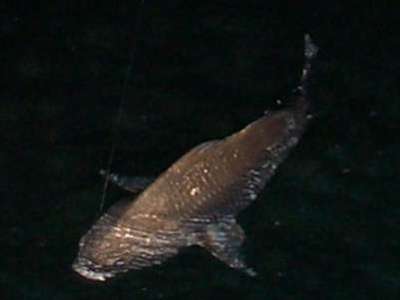
In the Delaware Bay, Chesapeake Bay and along the coast of Virginia, black drum are a seasonal catch in most areas. The first fish may arrive inshore as early as April.
Anglers begin fishing for black drum in May and June from areas such as Kiptopeake State Park in Virginia. The area is known for good black drum fishing, especially around buoys 16 to 13 in about 20 to 25 feet of water.
Some anglers prefer the last of the flood tide and the first of the outgoing, especially if the change of tide is around sunset or later.
Depending on personal preference, anglers may use quahog clams, surf clams, peeler crab, or other baits. Chumming with broken clams is also popular, which sometimes helps to attract fish to the boat.
The common black drum rig is very simple to rig and seems to work very well. These can be make using a 3 way swivel with a snap on one eye for the sinker.
Anglers vary the weight from 3 to 8 oz. depending on the current. A 3 to 4 ‘leader of #50 or #80 mono is attached to the swivel. Anglers use circle hooks or live bait hooks for catching black drum.
In addition to the traditional fishing in the lower Chesapeake and the Delaware bays, there are several niche fisheries for black drum.
Black drum are caught by surf fishermen from North Carolina to New Jersey. Most catches from the surf coincide with the spring runs that boat fishermen enjoy.
Surf anglers capitalize on spring time black drum migrations as they arrive together with or just after striped bass. Black drum are sometimes caught together with red drum.
Another niche fishery occurs in the middle Chesapeake, usually in late May and into June. In coastal bays and inlets, black drum can sometimes be found around bridge pilings or other structure.